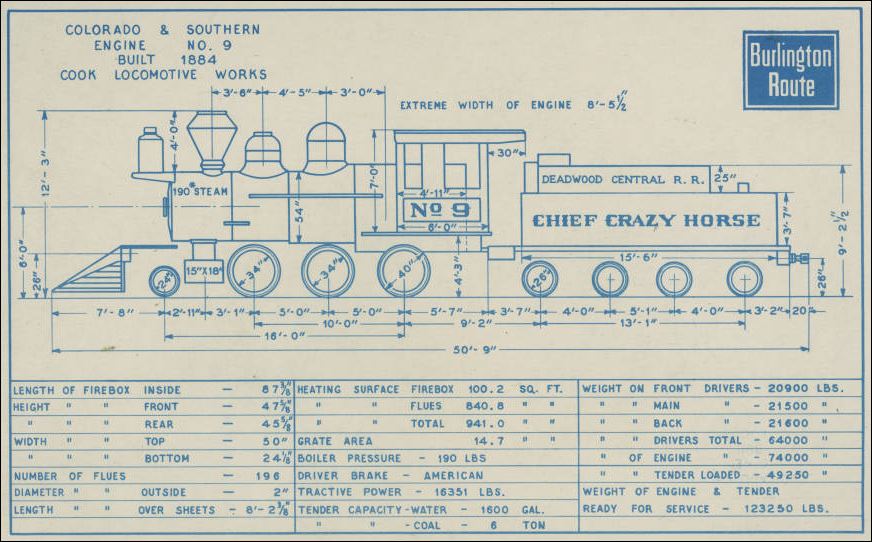Modifying Bachmann On30 mogul for C&S #9 model
12


12
|
I digress but the photo of 22 on the Como turntable does show that Bay 19 had a smokestack.
|
Re: Modifying Bachmann On30 mogul for C&S #9 model
|
In reply to this post by Holt Guysi
 http://collections.carli.illinois.edu/cdm/ref/collection/nby_chicago/id/2826
UpSideDownC
in New Zealand |
|
In reply to this post by South Park
I found this thread quite interesting and informative. I will look at the pictures and drawingsv a little closer to see what i can do with my shrunk down fleet. Seems thatmy two Bachmann moguls don't really match #21 &22. I am getting a 3rd one but it doesn't have the tank on top the boiler. So I'm now just scratching my nogin a bit.
Fred Cotterell |
|
In reply to this post by Jim Courtney
I have been re-visiting this recently, and I think you have the "hard documentation" there in the 1903 roster. Consider: All three 11, 12, and 13 lost their ringed domes and acquired the flat-topped derby hat domes in the late 1890-1900 time frame. This has a mild implication that all three were re-built. But more important, in your roster the 1884 Cooke 2-8-0s 37-56 are listed with boiler pressure #145. These are the same year and maker as the 1884 Cooke 2-6-0s. I don't know of any claim that the 37-56 were ever re-boilered. The definitely re-built 12 is listed with boiler pressure #150 implying a newer boiler from its re-build. But note that both 11 and 13 are also listed with boiler pressure #150. If 11 had not been re-built retaining its older boiler it would make sense to have the same boiler pressure specs as the un-rebuilt Cooke 37-56. This sounds to me a lot like all three 11, 12, and 13 got new boilers at the same time that they got their more modern domes and that this re-building was before 1903. Is this reasonable deduction? Skip Egdorf Los Alamos, NM
Skip Egdorf
|
Re: The "Un-rebuilt" Cooke 2-6-0's (11, 12 and 13)
|
Interesting observation, Skip.
That would suggest that C&S 11-12-13 were actually the first rebuilt Cooke moguls. To my way of thinking, if true, this likely happened in the late 1890's, under the Trumbull receivership. There may have been plans to rebuild the remaining Cooke 2-6-0's in the same manner. Brooks locomotives C&S 21 and 22 were likewise rebuilt to the same general plans in the 1890's (dated photos exist), all five locomotives with similar, unequal driver wheelbases. With the reorganization of the new C&S, plans changed; perhaps management was unimpressed with the performance of rebuilt 11-12-13-21-23, though they were now the most powerful passenger locomotives on the roster. Instead they launched into the second Cooke rebuild (new build) program, rebuilding the remaining Cooks to the much heavier B-4-C class, 4-10. The first locomotives rebuilt were 4 and 6 in July, 1900. The last was number 7 in July, 1902. (Derrell Poole in Narrow Gauge Pictorial VI) So your general observation makes sense to me, with the exception that this re-building was before 1900, not 1903. Once the new rebuilding of the Cookes 4-10 began in the summer of 1900, I can't imagine why the C&S would rebuild 11-12-13 into lighter locomotives. Anyone else have thoughts or other documentation?
Jim Courtney
Poulsbo, WA |
«
Return to C&Sng Discussion Forum
|
1 view|%1 views
| Free forum by Nabble | Edit this page |


